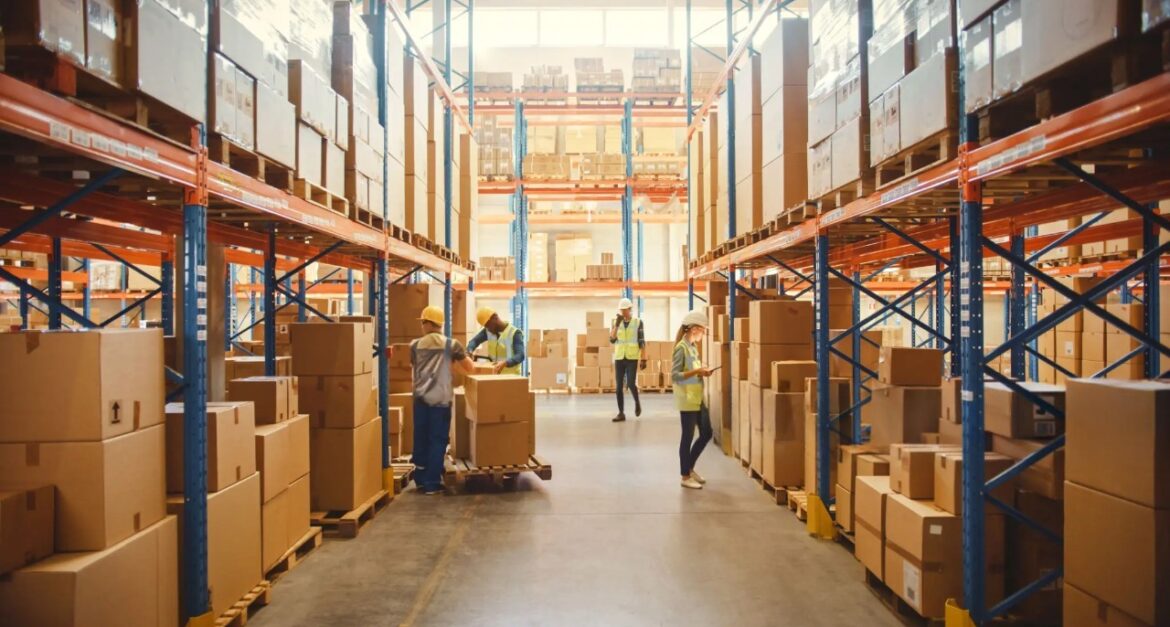
Introduction: The Logistics Revolution Reshaping Saudi Arabia
Saudi Arabia is on a new stage in logistics. As global pressures faced by supply chains persist due to the disruptions, geopolitical tenuousness and fluctuation in consumer demands, the Kingdom has carved itself a place as a frontrunner in regional and international logistics. Efficient transportation of goods is no longer just a question of that; rather, a modern approach to moving goods through a dynamic environment, or even to re-script the book on logistics through innovations in technology, huge infrastructural efforts, and plans to diversify the economy are now questions that we often hear.
Saudi Arabia logistics industry is witnessing paradigm shift and it is not just about conventional transportation of goods. Companies in different industries are undergoing a paradigm shift in the way things would move in the region hence it is becoming an opportunity and a strategic necessity and this cannot at all be overlooked.
Understanding Saudi Logistics Market Trends: The Strategic Foundation
The Saudi logistics market trends refer to the changing dynamics, technology, logistics infrastructure, and business modal efficiencies that formulate the Saudi supply chain business. The landscape is a multi-faceted one: it encompasses both conventional freight forwarding and warehousing services and the most advanced smart logistics delivered by artificial intelligence and Internet of Things (IoT) platforms.
The Saudi logistics market is much more than geographical convenience, it is a fully integrated vision of change which falls into the government Vision 2030 diversification indicators of the economy. The trends are indicators of how systematically the Kingdom has turned out to be a global logistic hub in linking three continents as well as a lesser reliance on oil revenues.
Core Market Characteristics and Emerging Attributes
Market Scale and Growth Trajectory
Saudi logistics reflects incredible financial dynamism and robust growth. The global market attained the figure of USD 52.7 billion in 2024 and is estimated to rise at a CAGR rate of 4.9% in the next 10 years to reach USD 81.2 billion. This rate of growth is considerably much higher than that of several developed markets as it is indicative of the intensive infrastructure development and economic transformation activities in the Kingdom.
The transportation services shared 30.15 percent of the revenue in 2024, and this indicated its further prominence of the physical moving capabilities. Nevertheless, this conventional superiority is being put more and more complemented with technology-based services and value-adding logistics services.
Technological Integration and Digital Transformation
Modernization of Saudi logistic infrastructure is one of the biggest technological jump in the history of the region. Firms are deploying AI-integrated route optimization, IoT based tracking/monitoring and micro-fulfillment hubs and gain 25 percent faster delivery and 15 percent fewer misplaced packages. These innovations hit right at the problems that have plagued the industry since time immemorial relating to delivery reliability and customer satisfaction.
The integration of digital payment and the system of cashless transactions is turning into a new norm and follows a larger governmental trend towards its digitalization. On this technology base, advanced analytics of supply chains, predictive maintenance and automated inventory management systems are possible.
Geographic and Strategic Positioning
The geographic location of Saudi Arabia as a link between Europe, Asia and Africa poses logistics opportunities per se. Al-Riyadh is predicted to have the biggest market share of 45 percent in the year 2024 because of vast industrial and business centers and extensive Vision 2030 undertakings. Such focus indicates the strategic intention of the Kingdom to develop the centralized logistic abilities and to preserve the distribution channels in the most important places.
Specialized economic zones, and free-trade areas created serve to enhance these geographic advantages further through decreasing regulatory friction as well as facilitating more efficient cross border flows of trade.
Real-World Applications and Industry Use Cases
E-commerce and Last-Mile Delivery Solutions
The dynamism in growth of the online retail business in Saudi Arabia has disrupted the logistics requirement fundamentally in the entire region. Growing online retail channel is a driver in the demand of last mile freight delivery and parcel logistics. In order to keep up with consumers who increasingly demand more of their companies, companies are spending millions in urban distribution center, automated sorting and more flexible delivery options.
Even major players in the logistics business are maximizing use of micro-fulfillment tactics (bringing the inventory into locations nearer the final customers) shortening delivery time and lowering realities. Such solutions are especially useful in larger cities where traffic jams and city density pose the classic payload delivery problems.
Industrial and Manufacturing Supply Chains
The growth of the manufacturing industries in Saudi Arabia, especially petro chemicals, metals and consumer products, is contributing to high-end logistics needs. Businesses need unified solutions in supply of raw materials to production, post-manufacture products delivery, and exportation.
The construction of industrial cities and production agglomerations leads to a high demand in such freights as heavy transportation, specialized equipment of handlings, and customs regulations services in a concentrated way. Such industrial uses commonly necessitate round the clock operation, temperature-controlled environments, and a hazardous material capability.
Healthcare and Pharmaceutical Logistics
The Kingdom’s healthcare sector expansion, accelerated by pandemic-related requirements and demographic changes, generates specialized logistics demands. Pharmaceutical distribution requires cold chain management, regulatory compliance tracking, and rapid emergency distribution capabilities.
Medical equipment logistics, particularly for advanced diagnostic and treatment technologies, requires specialized handling, installation support, and maintenance logistics. These applications demonstrate the increasing sophistication of Saudi logistics service offerings.
Energy and Infrastructure Project Support
Major infrastructure developments under Vision 2030, including NEOM, Red Sea Global, and transportation network expansions, create massive logistics requirements. Projects like the $500 billion NEOM smart city and the $1.5 trillion master planned development require unprecedented coordination of construction materials, equipment, and workforce transportation.
These mega-projects serve as testing grounds for advanced logistics technologies and methodologies that subsequently benefit commercial applications across the Kingdom.
Competitive Landscape and Market Positioning
Leading Market Players
Major companies operating in the Saudi freight and logistics market include Almajdouie, Bahri, Binzagr Company, SMSA Express Transportation Company Ltd., and Wared Logistics. These established players compete alongside international logistics giants establishing regional operations.
The competitive landscape increasingly favors companies offering integrated digital solutions, specialized industry expertise, and comprehensive geographic coverage. Traditional freight forwarders are expanding into value-added services including supply chain consulting, inventory optimization, and technology integration.
International Competition and Partnerships
Global logistics providers recognize Saudi Arabia’s strategic importance and are establishing significant local operations. This international competition drives innovation, service quality improvements, and competitive pricing across the market.
Strategic partnerships between local and international companies create hybrid models that combine regional market knowledge with global operational expertise and technology platforms.
Differentiation Strategies
Successful logistics companies in Saudi Arabia differentiate through specialized capabilities including:
Technology Leadership: Advanced tracking systems, predictive analytics, and automated operations management Industry Specialization: Deep expertise in specific sectors like healthcare, automotive, or energy Geographic Coverage: Comprehensive networks spanning urban centers, industrial zones, and remote locations Regulatory Expertise: Navigation of customs procedures, free zone operations, and cross-border trade requirements Sustainability Initiatives: Environmental compliance, carbon footprint reduction, and circular economy integration
Implementation Framework and Investment Considerations
Infrastructure Investment Requirements
Entering or expanding within the Saudi logistics market requires substantial infrastructure investments. Successful operations typically require:
Physical Infrastructure: Warehousing facilities, distribution centers, transportation fleets, and specialized handling equipment Technology Systems: Warehouse management systems, transportation management platforms, customer portals, and integration capabilities Human Resources: Trained logistics professionals, multilingual customer service teams, and specialized technical staff Regulatory Compliance: Licensing, customs bonding, safety certifications, and ongoing compliance management
Operational Cost Structure
Saudi logistics operations benefit from relatively low fuel costs, government infrastructure investments, and strategic geographic positioning. However, companies must account for:
Technology Investments: Initial setup costs for digital platforms and ongoing software licensing Training and Development: Workforce capability building and continuous education programs Regulatory Compliance: Licensing fees, certification costs, and compliance monitoring expenses Quality Assurance: Service level monitoring, customer satisfaction measurement, and continuous improvement programs
Return on Investment Expectations
The logistics market is projected to grow at a CAGR of 6.5% from 2025 to 2030, driven by large-scale investments and operational improvements. Companies typically achieve positive returns through:
Volume Growth: Increasing shipment volumes and customer base expansion Operational Efficiency: Reduced costs through automation and process optimization Value-Added Services: Higher margins from specialized services and consulting offerings Market Share Capture: Competitive positioning in high-growth market segments
Strategic Implementation Roadmap
Phase 1: Market Entry and Foundation Building (Months 1-12)
Market Research and Partnership Development: Comprehensive market analysis, regulatory requirement assessment, and strategic partnership identification Infrastructure Establishment: Facility acquisition or leasing, technology platform implementation, and initial staffing Compliance and Certification: Regulatory approvals, safety certifications, and operational license acquisition Pilot Operations: Limited service launch, customer feedback collection, and operational refinement
Phase 2: Operational Scaling and Service Expansion (Months 12-24)
Geographic Expansion: Extended coverage areas, additional facility development, and transportation network optimization Service Portfolio Development: Value-added service introduction, specialized capability building, and technology enhancement Customer Base Growth: Sales team expansion, marketing program implementation, and strategic account development Operational Excellence: Process standardization, quality system implementation, and performance measurement
Phase 3: Market Leadership and Innovation (Months 24+)
Technology Leadership: Advanced analytics implementation, automation expansion, and innovation program development Strategic Partnerships: Joint venture development, technology licensing agreements, and market expansion collaborations Sustainability Integration: Environmental program implementation, circular economy initiatives, and corporate responsibility enhancement Regional Expansion: International market entry, cross-border service development, and global network integration
Frequently Asked Questions
What drives the rapid growth in Saudi Arabia’s logistics market?
The Saudi logistics market’s exceptional growth stems from several converging factors. Vision 2030’s economic diversification strategy creates massive infrastructure demand while reducing oil dependence. Major projects like NEOM are expected to create 460,000 jobs and add $48 billion to GDP, generating substantial logistics requirements. Additionally, e-commerce expansion, manufacturing sector development, and the Kingdom’s strategic position connecting three continents contribute to sustained market growth.
How does technology integration impact logistics operations in Saudi Arabia?
Technology adoption in Saudi logistics delivers measurable operational improvements and competitive advantages. Modern implementations focus on AI-driven optimization, real-time tracking systems, and automated warehouse operations. These technologies address traditional challenges including delivery reliability, inventory accuracy, and customer visibility while enabling predictive analytics and proactive problem resolution.
What are the primary challenges facing logistics companies in Saudi Arabia?
Key operational challenges include talent acquisition and development, particularly for specialized technical roles, regulatory complexity navigation across different economic zones, infrastructure coordination during rapid expansion periods, and maintaining service quality while scaling operations. Additionally, companies must balance traditional business practices with rapidly evolving technological requirements and changing customer expectations.
Which industries offer the greatest logistics opportunities in Saudi Arabia?
Examples of high growth areas are e-commerce and retail fulfillment, because of digital adoption and shifting consumer patterns, manufacturing and industrial support, especially in petrochemicals and auto assembly, healthcare and pharmaceutical distribution, where specialized handling and compliance capabilities are in demand, construction and infrastructure support to achieve Vision 2030 mega-projects, and energy sector logistics, such as renewable energy equipment, as well as conventional petroleum products.
How do Saudi logistics costs compare to regional and international markets?
The Saudi logistical expenses enjoy government development investments, low fuel prices which are subsidized, and geographical location advantages. The problems of technology implementation, professional workforce, and regulations compliance, however, introduce other factors of expenses. The companies tend to obtain cost benefits by leveraging on their scale of operations, technology utilization and resource division to realize their strategic alliances to maintain lucrative service outputs.
What role does sustainability play in Saudi logistics market trends?
Integration is the sustainability that is not only a regulatory fact but also a competitive advantage in the Saudi market. The implementation of the zero-carbon and circular economy solution is applicable in NEOM, which reflects on the willingness of the Kingdom to innovate its environmental sphere. Companies involved in logistics are resorting more to carbon footprint reduction initiatives, environmentally friendly packaging and using the circle economy. These programs are Vision 2030 environment-related goals as well as the increasing customer demands in environmental friendly operations.
How should international companies approach the Saudi logistics market?
Strategies needed during entry into international markets need extensive local partnership, ways of building up regulatory skills and culture adaptation skills. Successful strategies focus on local partnerships, tech investments, workforce localization, and market knowledge, while firms balance global standards with local needs.
Conclusion: Positioning for Success in Saudi Arabia’s Logistics Future
Palm Horizon KSA acts in one of the logistic markets wherein they provide logistics services in KSA. Vision 2030 investments, innovation, and diversification create strong growth opportunities for companies offering smart logistics solutions. The full service offering of your company, its legislative knowledge and keep up with the market means that your company will gain disproportionate market share as the industry undergoes the transformation.
The achievement of success will necessitate the significant technological investments, development of specialized capability, and the preserving the operational excellence as the scale of operations expands. Transformational change rather than growth is occurring in the Saudi logistics market. At the forefront of this new ecosystem of logistics, Palm Horizon KSA can expect to become a leader in delivering real value to its customers in the different sectors of industry with its business aligned against the goals of Vision 2030.




